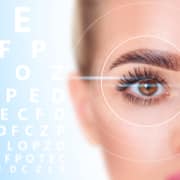Simple ways to show your eyes some love
We couldn’t let Valentine’s Day pass us by without giving you tips on how to show your eyes some love. Here are five simple ways to keep your eyes healthy:
- Eat your fruits and vegetables. It’s important to eat a diet that’s rich in a variety of nutrient-packed fruits and vegetables for great overall health, but it’s especially important to eye health. Nutrients such as zinc, lutein and vitamins C and E can help prevent or slow down age-related vision problems such as cataracts and macular degeneration. Omega 3 fatty acids are essential to eye health and can be found in salmon, tuna and other oily fish.
- You gotta wear shades. Sunglasses, ideally with 100 percent protection from the sun’s harmful ultraviolet A and B rays, are your eyes best defense in the sun. Also consider wearing a hat, which will take some of the sunlight off your eyes. It’s also important to wear safety eye goggles when working with any potentially dangerous substances that could harm your eyes and prevent eye injury.
- Stop smoking. Smoking has been shown to increase your risk of developing cataracts, macular degeneration and optic nerve damage. Plus, smoking is linked to many other health conditions. If you need help with smoking cessation, ask your doctor for help.
- Rest your eyes. People are increasingly spending more time each day staring at a screen, whether it’s scrolling through social media on their smart phone, watching TV or working at a desktop monitor or laptop computer. Spending too much time in front of a screen each day can put strain on your eyes, which can lead to dry eye, blurred vision, headaches and neck and back pain. A good way to reduce this eye strain if you can’t avoid screen time is to follow the 20-20-20 rule: Look away from the screen and at something that’s 20 feet away for 20 seconds every 20 minutes.
- Get regular eye exams. Getting annual eye exams and comprehensive eye exams as indicated will help you keep your eyes in good health and stay on top of any health conditions that may not know you have until you have your eyes tested.
If you’re ready to show your eyes the love they deserve, call 808.955.3937 for an appointment with Dr. Maehara.










